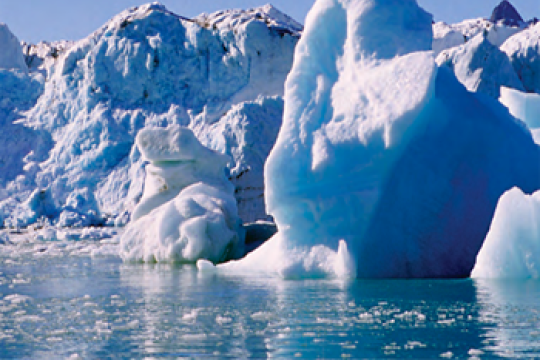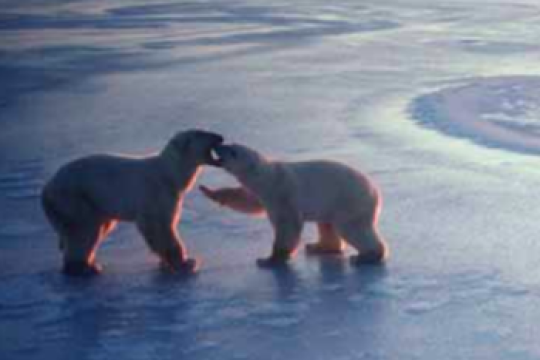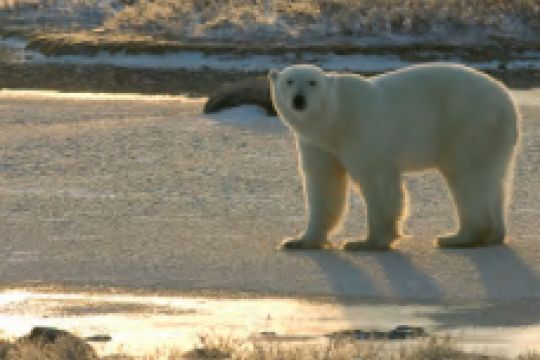Polar Bears International
Top of the World
Students will identify, locate, outline, and map the Arctic Circle, including the countries that lie within its boundaries. Students will define the Arctic region by latitude, temperature, and tree line. Students will compare and contrast the human and environmental characteristics of the North and South Poles, the equator, and their home town.
Lesson plan
Subject: Geography
Grade Level: 3-5, Middle School
Developer: Polar Bears International
Students will identify, locate, outline, and map the Arctic Circle, including the countries that lie within its boundaries. Students will define the Arctic region by latitude, temperature, and tree line. Students will compare and contrast the human and environmental characteristics of the North and South Poles, the equator, and their home town.
Lesson plan
Subject: Geography
Grade Level: 3-5, Middle School
Developer: Polar Bears International
Polar Bears in a Warming World:A Climate Change Lesson
Students will locate and distinguish the four major sea ice eco-regions in the Arctic and explore the impacts of sea ice loss over time due to climate change and the ensuing threats these changes may have on the Arctic ecosystem and its inhabitants.
Lesson plan
Subject: Climate, Constructing explanations, Earth science, Ecosystems, Life science, Sea ice
Grade Level: 3-5, Middle School
Developer: Polar Bears International
Students will locate and distinguish the four major sea ice eco-regions in the Arctic and explore the impacts of sea ice loss over time due to climate change and the ensuing threats these changes may have on the Arctic ecosystem and its inhabitants.
Lesson plan
Subject: Climate, Constructing explanations, Earth science, Ecosystems, Life science, Sea ice
Grade Level: 3-5, Middle School
Developer: Polar Bears International
Polar Bear Tracker
Students will explore the world of polar bear researchers through the PBI Bear Tracker webpage and the Bear Tracker PowerPoint. They will understand how polar bears are studied using radio collar tracking and track bears in real time. Through the inquiry process, create scientific investigable questions just like real researchers, and learn how you can take action to help polar bears.
Lesson plan
Subject: Analyzing and interpreting data, Asking questions, Climate, Ecosystems, Life science
Grade Level: Middle School, High School
Developer: Polar Bears International
Students will explore the world of polar bear researchers through the PBI Bear Tracker webpage and the Bear Tracker PowerPoint. They will understand how polar bears are studied using radio collar tracking and track bears in real time. Through the inquiry process, create scientific investigable questions just like real researchers, and learn how you can take action to help polar bears.
Lesson plan
Subject: Analyzing and interpreting data, Asking questions, Climate, Ecosystems, Life science
Grade Level: Middle School, High School
Developer: Polar Bears International
Extreme Ecosystems: A Biodiversity Lesson
Students will identify and categorize plants and animals in the Arctic with an emphasis on which animals are endangered, threatened, or a species of special concern. Students will participate in individual species studies, presentations, and an interactive class trivia game.
Lesson plan
Subject: Ecosystems, ELA, Life science, Obtaining and evaluating information
Grade Level: 3-5, Middle School
Developer: Polar Bears International
Students will identify and categorize plants and animals in the Arctic with an emphasis on which animals are endangered, threatened, or a species of special concern. Students will participate in individual species studies, presentations, and an interactive class trivia game.
Lesson plan
Subject: Ecosystems, ELA, Life science, Obtaining and evaluating information
Grade Level: 3-5, Middle School
Developer: Polar Bears International


